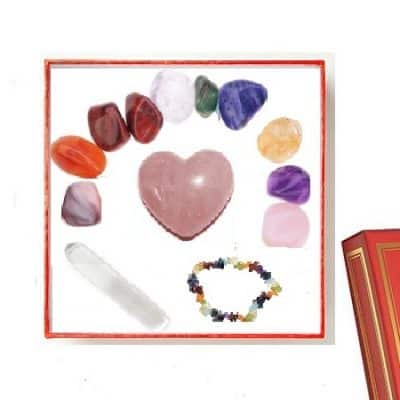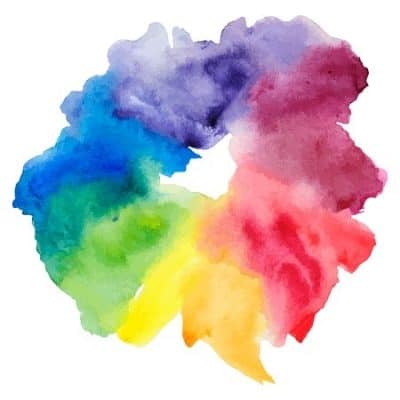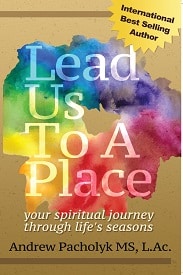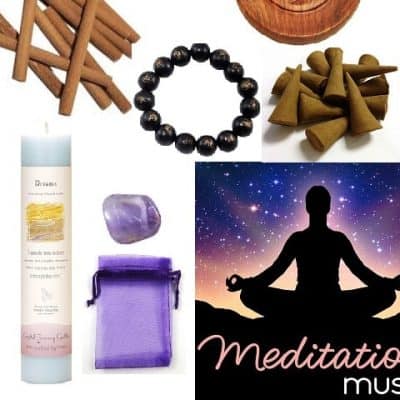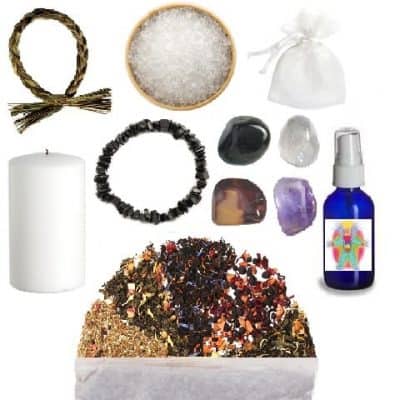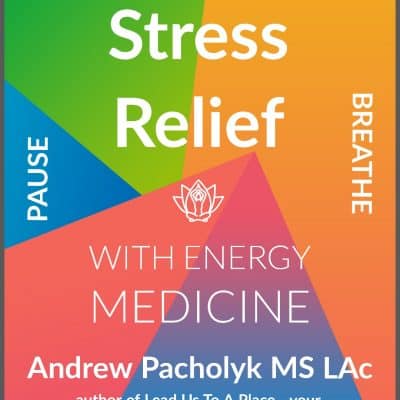
Yoga therapy coordinates particular yoga asanas for specific disorders. These poses (asanas) may change according to a person’s progress. Yoga therapy advocates the belief that since yoga is a holistic discipline teaching that the mind, body, and spirit are connected, yoga therapy can go beyond the results that are possible with physical therapy.
From this portal you can find information on yoga schools of thought. You will learn about the tools for yoga such as pranayama, how to do asanas for healing and the magic of mudras. Take your yoga class online. Learn how meditation, breathing and stretching can help with pain situations. Find our most comprehensive guide to yoga remedies. Discover how to live a yogic lifestyle, learn the healing practice of ayurveda and enjoy our featured products for yogis.
Yoga Best Sellers
-

7 Chakra Sage Smudge Stick
$ 6.95 -
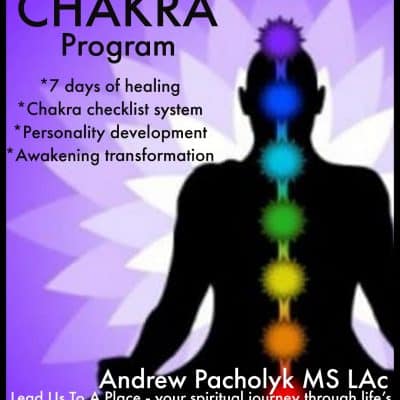
7 Day Chakra Program Ebook
$ 9.95 -

Addiction Stone Set
$ 21.95 -

Agate Eye
$ 19.95 -
Sale!

Amethyst Druzy Clusters
Original price was: $ 32.00.$ 28.00Current price is: $ 28.00. -
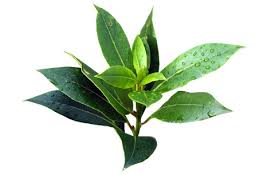
Angel’s Mist Tea Tree Essential Oil
$ 14.00 -

Angel’s Mist Aroma Remedy Blends
$ 19.95 -

Animal Totem Pouch
$ 29.95 -

Aura Crystal Cleanse Kit
$ 24.95 -

Aura Orb
$ 32.00 -

Auralite Perfume
$ 38.00 -

Blue Color Therapy Kit
$ 24.95 -
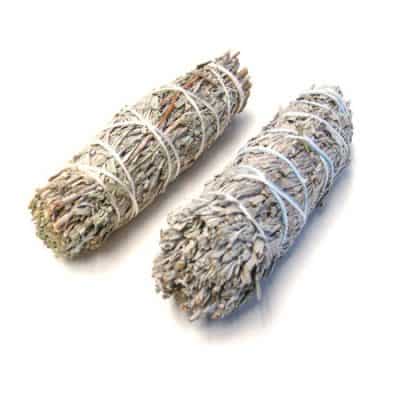
Blue Sage Smudge Stick
$ 6.95 -
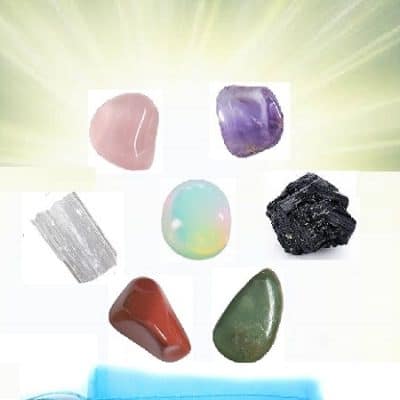
Calm Spirit Stone Set
$ 21.95 -

Chakra Chime Candle Set
$ 9.95 -

Chakra Chip Bracelet
$ 14.00 -

Chakra Granule Tea Capsules
$ 38.00 -
Sale!

Chakra Granule Tea Collection
Original price was: $ 266.00.$ 239.00Current price is: $ 239.00. -

Chakra Incense Collection
$ 6.95 -
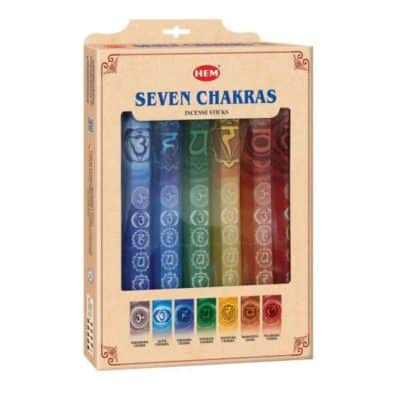
Chakra Incense Gift Set
$ 9.95 -

Chakra Interchange Pendant
$ 21.95 -

Chakra Massage Oil
$ 19.95 -

Chakra Petal Set
$ 21.95 -

Chakra Pillar Candle Set
$ 89.00 -

Chakra Pillar Candles
$ 14.95 -

Chakra Rainbow Mala Prayer Beads
$ 49.95 -

Chakra Scent-ology ™ Perfume
$ 59.95 -

Chakra Votive Collection
$ 19.95 -

Chakracology Course
$ 279.95 -

Chakracology Course Online
$ 259.95 -

Chakracology Course PLUS
$ 299.95 -

Color Effects Lighting Gels
$ 79.95 -

Color Effects Lighting Gels+
$ 98.95 -

Color Therapy Quartz Set
$ 24.95 -

Complete Chakra Healer Kit
$ 21.95 -

Crystal Cleanse Kit
$ 19.95 -

Crystal Elixir Oils
$ 11.95 -

Crystal Sun Sign Oils
$ 12.95 -

Crystal Travel Pouch
$ 19.95 -

Crystalline Angel Course
$ 279.95 -

Crystals for Mercury Retrograde
$ 14.95 -

Dharma Prayer Wheel Pendant
$ 19.95 -

Drainage-Tone Formula
$ 38.00 -

Emotional Stress Crystal Pouch
$ 14.95 -

Fire Element Drop Necklace
$ 34.95 -

Full Moon Bath Salts
$ 14.95 -

Full Moon Candle
$ 14.95 -

Full Moon Ritual Kit
$ 29.95 -

Full Spectrum Diet and Kit
$ 39.95 -

Goddess Crystal Candle
$ 17.95 -

Green Color Therapy Kit
$ 24.95 -

Heart Red Candle Holder
$ 5.95 -

Hot Stone Complete Massage Kit
$ 279.00 -

Hot Stone Massage Kit
$ 99.00 -

Hot Stone Starter Kit
$ 59.95 -
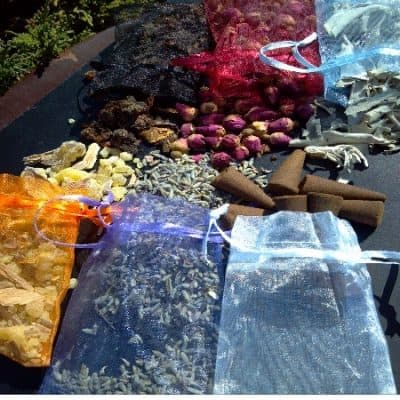
Incense Herbal Sampler
$ 11.95 -

India’s Sweetest Flower Incense
$ 5.95 -

Indigo Color Therapy Kit
$ 24.95 -

Intrigue Perfume
$ 32.00 -

Jade and Pearl Bracelet
$ 48.00 -

Jade Gua Sha Tool
$ 34.95 -

Lava Rock Chakra Bracelet
$ 14.95 -

Law of Attraction Crystal Pouch
$ 21.95 -

Law of Attraction Perfume
$ 28.00 -

Love Stone Collection
$ 21.95 -

Manifest + Cultivate Oil
$ 21.95 -

Meditation and Journal Kit
$ 49.95 -

Meditation Certification Course
$ 299.95 -

Meditation Teacher Course
$ 395.95 -
Sale!

Memory Pro
Original price was: $ 54.00.$ 44.95Current price is: $ 44.95. -

Mercury Retrograde Incense Cones
$ 6.95 -

Nature’s Votive Candles
$ 9.95 -

New Moon Bath Salts
$ 14.95 -

New Moon Candle
$ 14.95 -

New Moon Essential Bath & Body Oil
$ 19.95 -

New Moon Ritual Kit
$ 29.95 -

New Moon/Full Moon Candle Set
$ 27.95 -

Oak Skin Care
$ 34.95 -

OM Stone Heart Pendant
$ 9.95 -

Orange Color Therapy Kit
$ 24.95 -

Palo Santo Incense Cones
$ 6.95 -

Peaceful Pendant
$ 14.95 -

Phantom Quartz Pendant
$ 39.95 -

Phoenix Rising Pendant
$ 24.95 -

Plumeria Clip On
$ 13.95 -

Protection 2 in 1 Candle
$ 21.95 -

Protection Shield Pendant
$ 32.00 -

Psychic Intuitive Pendant
$ 32.00 -

Rainbow Chakra Integrator
$ 19.95 -

Rainbow Incense Collection
$ 6.95 -

Rainbow Quartz Pendant
$ 14.95 -

Raw Energy Amethyst Pendant
$ 21.95 -

Red Color Therapy Kit
$ 24.95 -

Reiki Spirit Incense Cones
$ 5.95 -

Reishi Hand Cream
$ 29.95 -

Reishi Mushroom Capsules
$ 42.00 -
Sale!

Rose Quartz Pyramid
Original price was: $ 44.00.$ 39.95Current price is: $ 39.95. -

Sacred Intention Incense Sticks
$ 6.95 -

Sacred Mandala Love Pendant
$ 34.95 -

Sacred Symbol Pendants
$ 21.95 -

Sage Clearing Spray
$ 14.95 -

Sage Incense Cones
$ 4.95 -

Sage Incense Sticks
$ 11.95 -

Selenite Moon Glow Pendant
$ 19.95 -

Shungite Energy Water
$ 14.95 -

Spiritual Wealth Pendant
$ 21.95 -

Star Blue Candle Holder
$ 5.95 -

Subtle Tea Anniversary Blend
$ 12.95 -

Summer Breeze Candle Set
$ 14.95 -

Summer of Love Essential Oil Blends
$ 11.95 -

Summer of Love Incense
$ 5.95 -

Sun “Life Force” Pendant
$ 21.95 -

Sun & Moon Crystal Set
$ 24.95 -

Sun Resin Incense
$ 6.95 -
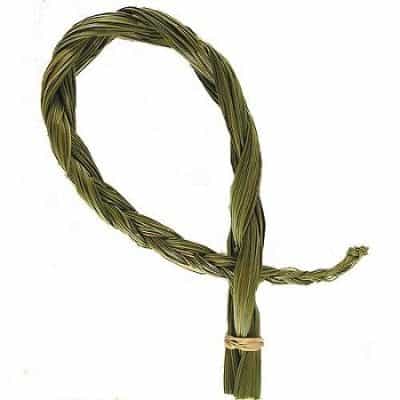
Sweetgrass Braid
$ 12.95 -

Tar Water
$ 14.95 -

The Chakra Myst Sprays
$ 14.95 -
Sale!

The Chakra Myst System ™
Original price was: $ 105.00.$ 99.00Current price is: $ 99.00. -

Transforming Recovery Pendant
$ 34.95 -

Triple Blessing Oil
$ 11.95 -

Turmeric Tabs
$ 24.95 -

Vajra Intention Pendant
$ 21.95 -
Sale!

Vedic Chakra Bath Perfume Oil Set
Original price was: $ 105.00.$ 94.00Current price is: $ 94.00. -

Vedic Chakra Bath Perfume Oils
$ 14.95 -

Violet Color Therapy Kit
$ 24.95 -

Yellow Color Therapy Kit
$ 24.95 -

Yoga Crystal Healer Kit
$ 24.95 -

Yoga Detox Ebook
$ 9.95 -

Yoga Sutra Oil
$ 9.95

Tools of Yoga
Hatha Yoga has four divisions or limbs: Asana (bodily postures), Pranayama (regulation of breath), Mudra (arrangement of fingers denoting mystic signs) and Nadanusandhana (hearing the inner sound). Practice of asanas increase muscle flexibility and tone while improving circulation, as they boost the immune system. Complimenting the the practice of asanas, are pranayama and a deeper understanding of the processes of yoga. Hatha yoga is one of the best-known yoga practices of western society. Practicing yoga is associated with establishing harmony, equanimity, balance. It has been well-publicized in mainstream media, recommended to patients by their doctors, and praised by its many practitioners.

Asanas
Asanas (yoga postures) are based on the sanskrit word “asana” which is derived from the root as which means to be present, to dwell in, to sit quietly, abide, to inhabit. Asana literally means to sit down or sit in a particular position. In the context of yoga, asana refers to the various postures or positions that are commonly identified with the practice of yoga such as the headstand (sirsha-asana) or the lotus (padma-asana), for example. In order to perfect the postures, stretching is done. Regular practice at approximating the asanas and using breath and gravity to allow you to relax further into the pose. This is Hatha Yoga.

Pranayama
Hatha is composed of the syllables Ha and Tha. The breath that rises from the heart and goes out of the body, is called the Prana and is denoted by the syllable Ha. It is always warm and is, therefore, also called the sun. The breath that is taken in, is the Apana and is denoted by the syllable Tha. It is cool and is therefore also called the moon. The right regulation of the action of these, sun and moon, or Prana and Apana is Hatha Yoga. Therefore, ha and tha symbolically represent the sun and the Moon or Ida and pingala nadis and establish the equilibrium from within.
Breath is life! Exchange of electrons. Flow of energy. Air is the primary nutrient. Survival without it is measured in minutes. It is so important that you do it without thinking. Your breathing is the voice of your spirit. It’s depth, smoothness, sound, and rate reflect your mood. If you become aware of your breath and breathe the way you do when you are calm you will become calm. Yogic breathing techniques are a vocabulary for communicating between the higher cerebrocortical (mind) brain, and the lower limbic and hind-brain autonomic structures. Conscious breathing initiates autonomic healing mechanisms.

The Magic of Mudras
‘Mudra’ means hand and finger postures. Like yogic body postures, it is also a discipline, to rejuvenate the body. Mudras are symbolic or ritual gesture in Hinduism and Buddhism. Mudra is a ‘spiritual gesture’ and energetic ‘seal of authenticity’ used in yoga and spiritual practices of Indian religions and Taoism. Such finger postures not only have a therapeutic effect on the mind-body system but also accentuate mental keenness and acuity.
The most well-known mudras are probably the ones performed while meditating. Sit in lotus position (or with crossed legs) and either put both hands on the knees, the tips of the thumb and index finger joining, or in the lap, the fingers of the right hand resting on the left palm.
Examples of everyday mudras include the Christian crossing of the fingers for prayer, as is the Indian greeting gesture (that is also used while praying), where the hands are held in front of the chest, the palms touching. The Thai greeting of holding the palms of the hands together and bringing them to the tip of the nose with a bow in ‘Sawadi ca’ is a mudra.

Nadanusandhana
To hear our “inner sound” is considered the practice of listening.
The human energy field is a symphony of sound, frequencies and energetic matter. From our auric field and Chakra centers, bones, and organs in the body, all possess a different resonant frequency. When an organ or part of the body is vibrating out of tune or non-harmoniously, it is called “dis ease” or disease. A body is in a healthy state of being when each cell, each organ creates a resonance that is in harmony with the whole being.
Consider learning our listening meditations.
Understand the process of paying attention to your inner vibrations.

Your Yoga Class
As a yoga student and teacher for over 20 years, I have dedicated much of my life to the healing and rejuvenating affects of yoga. Over the years, the fitness craze has become very interested in the ancient “art of yoga”. There have been many different types of yoga “workouts” that have been created. But many times in our quest for fitness and a hard body, At some point it becomes just a workout and not yoga. If you come to this path with fitness in mind that is important, but yoga is extremely powerful. If you try to rush it, you will only slow yourself down.
Yoga is not mind over body. It is harmony between them. In yoga, the mind is used to perceive (diagnose) and guide (heal) the body. Not to “control” it and never to force it.
The big lesson is that yoga takes time. Time for muscles to coordinate. Time for tissues to grow. Time for breath, spirit, and energy to flow. The time you invest in yoga comes back with interest in greater vitality, presence of mind, reduced need for sleep, and longer life.
Yoga should be conscious action not “learning routines.” The skill, grace, and poise develop naturally as an inevitable result of regular practice. No major effort is required or even effective. Trying hard will make your practice painful, even injurious, and will actually slow your progress! The therapeutic effect of yoga comes from involving your mind totally in inspiring (breathing) your body to wake.
The Lesson
This list of sequences of yoga asanas is set as an easy, effective guide for you to follow. While practicing them, emphasize the integrity of each pose, let the breath flow smoothly through your nose as you feel each stretch. Each asana has a thumb nail sketch for you to view proper positioning. Follow the sequence as is, for it is set up to flow through each move.
This Yoga class is good for beginners, as well as, the advanced practitioner. The degree of difficulty comes as to how much further and how much longer you can hold a pose, work deeper, longer, even more concentrated.
This list of sequences of yoga asanas is set as an easy, effective guide for you to follow. While practicing them, emphasize the integrity of each pose, let the breath flow smoothly through your nose.
~Andrew Pacholyk MS, L.Ac.

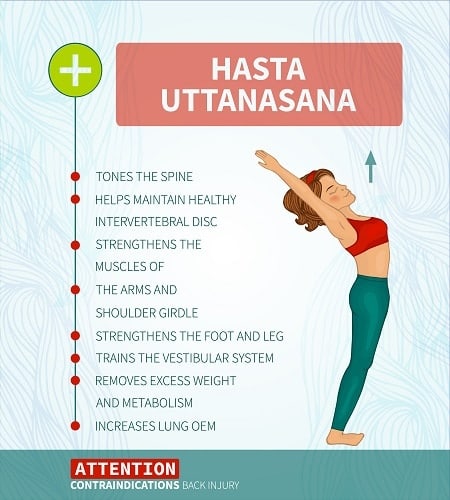




















Sun Salutation
- Using the lesson above, stand in (Tadasana), take a deep breath, clasp thumbs in front of you and raise arms in front of you over head.
- Arch back from the waist. (Hasta Uttanasana)
- Now, fold over at the waist as you exhale, placing palms on the floor (Uttanasana)
- From this position, simply take a deep breath and look up, keeping finger tips on the floor (Ardha Uttanasana) (see image #4)
- Step your right leg back into Lunge, step your left leg back to Plank (Chaturanga Dandasana)
- Flow through into upward facing dog (Ūrdhva Mukha Svānāsana)
- Move into downward facing dog (Adho Mukha Svanasana) Optional variations: move back into upward facing dog (Ūrdhva Mukha Svānāsana) then step your right leg back into Lunge, step your left leg back to Plank (Chaturanga Dandasana)
- OR step your right leg forward into Lunge, step your left leg forward for Uttanasana. From this position, simply take a deep breath and look up, keeping finger tips on the floor (Ardha Uttanasana) (see image #8)
- Fold back over at the waist as you exhale, placing palms on the floor (Uttanasana)
- inhale straight forward in front of you, arching back from the waist. (Hasta Uttanasana)
- Return to Tadasana. Repeat on the other side, stepping your left leg back into Lunge…
“Life on and off the Mat”

Essential Oils for Yoga
Essential oils have so many uses in yoga practice, both on and off the mat. I have a core group I recommend, such as eucalyptus, juniper, lavender, orange, rosemary, rosewood, tea tree, and thyme. These essential oils work as a calmative, an antiseptic, diuretic and infection fighter. These select oils are simply a jumping point for you to start discovering these wonderful “scent tools.”

Crystals for Yoga
Any gemstone can help you connect with your practice! Crystals can “speak” to us in different ways and it is usually due to the fact that we instinctively need something from them. When this happens at first glance, I often like to look up it’s metaphysical properties and color meanings. This often explains immediately why I was drawn to it. Below is a list of my favorite stones I use in my yoga practice.

Music for Sun Salutation
Music is an integral part of any yoga or spiritual practice. As music speaks and moves us on many levels, it is essential for any practice! “Oh rise of sun please come my way, with light and love and carefree days…I reach and fold and bend to you, like leaves and flowers, worship you. As you are truly nature’s force, I find the best through your great source…”

Living A Yogic Lifestyle
Incorporating yoga into your life can be one of the most rewarding and fulfilling experiences you can take on your journey! A nurtured yoga practice can transcend you by creating a disciplined mind a strong and physically fit body and no matter what religion you practice, like any religion, yoga can be a bridge to enhancing your spirituality.
Practicing yoga is associated with establishing harmony, equanimity, balance. It has been well-publicized in mainstream media, recommended to patients by their doctors, and praised by its many practitioners.
Key Factors of A Yoga Lifestyle
Bringing yoga into your life can change many aspects of it. To make this all encompassing, pay attention to:
1. Your Awareness is the key to yoga. With a clear awareness of Self, anything we do or experience can become a form of yoga. Self-awareness is connection with all of life. With connection comes joy and deep inner fulfillment. If we can expand and stabilize our awareness then we have achieved something of great importance in our lives. Awareness and consciousness are synonymous; however, one distinction is that awareness can be defined as the illumination of consciousness. Awareness is that part of us that allows us to be conscious, to know, feel and experience.
2. Your Prana or life force is that which gives you life. Everything that exists, animate and inanimate, is a manifestation of energy in one form or another. At the macrocosmic level, this energy is called Maha Shakti, which means great power. Within the microcosm of living beings Maha Shakti is called mahaprana (which means the great life force), and it is a very special form of energy. It is our life-force or vital energy, our inner power and strength. Mahaprana in the body is divided into functional divisions in the pranic body. When mahaprana is involved in respiration it is called prana. The word prana can also be translated as breathe.
3. Yoga Nidra or conscious sleep is a powerful healing tool that is fundamental to yoga therapy. This is because yoga nidra is an ultimate method of inducing profound relaxation and deep rest. Resting the body-mind is the basis on which true and deep healing takes place. Most people find it very difficult to rest deeply, especially when they are ill. Many will not take time off from work during an illness because of commitments, or because they are so driven. This reluctance to slow-down may lead to more complex and difficult to manage illnesses.
4. Your Meditation Practice is the foundation for cultivating awareness. Whenever awareness is present in a part of our life, that part can improve. Awareness is the key to health, greater intelligence and intuition, higher knowledge, and to uncovering our hidden abilities. Through regular meditation we develop our powers of perception and begin to see things as they really are. Awareness, which is cultivated in meditation, allows us to manage life, with its joys, sorrows and difficulties, with greater intelligence and creativity. To develop meditative awareness we need to learn a range of skills that cultivate our internal abilities. Each skill brings its own benefits, including relaxation, introversion, concentration, self-reflection, contemplation and the capacity to generate higher states of mind and being. All of these processes have one main aim, to cultivate greater and more stable awareness of who we are. We can then use meditation to benefit our physical, psychological and spiritual well-being.
Reasons To Incorporate Yoga As A Lifestyle
Practicing yoga is associated with establishing harmony, equanimity, and balance. It has been well-publicized in mainstream media, recommended to patients by their doctors, and praised by its many practitioners. Bringing yoga into your life can change many aspects of it. Here is what I’ve learned:
1. Yoga Creates Discipline: Discipline is a necessity in life. Discipline is essential for achieving any kind of success in your life! A disciplined practice of any kind is the secret to the most effective, efficient, and well strategized plan you can give yourself. Being successful, losing weight, and maintaining relationships are not tasks that come easy for most people. They are all things we must work hard on creating, keeping, and maintaining. Being disciplined helps in all aspects of your life.
2. Yoga Improves Circulation: Poor circulation is the cause of over 1000 diseases! From a healthy heart to a good sex life, the proper flow and circulation of blood in our arteries is one of the most important things we can do to maintain good health and push back the aging process. There is a common denominator between good arterial health and disorders such as heart attack, obesity, diabetes and high glucose levels, as well as sexual health. That common denominator is blood circulation.
3. Yoga Increases Flexibility: Yoga is the way to a more pliable, flexible body. It creates a supple and more resilient muscular structure suited to react quicker to falls, accidents, or in any kind of sports. As we age, the flexibility improved by doing yoga has shown to be a deterrent in injury related accidents. Physical flexibility can equate to better mental flexibility — if we pay attention.
4. Yoga Quiets the Mind: A disciplined mind is a free mind. Gain control over your thoughts and you maintain control over your life. Retrain your mind and you regain your freedom. Calming the mind is a behavioral technique used to interrupt, minimize, and eliminate “psychological noise.” Let’s face it, we all have psychological noise. Obsessive, repetitive thoughts, anxiety, and fear are all apart of negative, self-destructive patterns that can benefit from the power of yoga and mind quieting.
5. Yoga Improves Breathing : Breath is life. It is an exchange of electrons. Breath is the flow of energy. As air is our primary nutrient, survival without it is measured in minutes. It is so important — we do it without thinking. Your breathing is the voice of your spirit. It’s depth, smoothness, sound, and rate reflect your mood. If you become aware of your breath and breathe the way you do when you are calm, you will become calm. Yoga helps us to practice regular, mindful breathing and can be calming and energizing. With the addition of music and it’s rhythm, the “musical breath” can even help stress-related health problems ranging from panic attacks to digestive disorders. Fall into the rhythm of the music and breathe. Focus on your breathing as you move through your yoga poses.
6. Yoga Brings Awareness: Through your yoga practice, you can gain a broader perspective in self-awareness. Being able to open up your mind, allowing a free flow of thoughts and new ideas can be liberating. Welcoming a new opinion or way of doing something can bring a fresh perspective to your life. If you give up your closed thoughts and make way for different opinions, you may be surprised at the outcome. Through your yoga practice, you can learn to strive and meet difficult goals as you are pushed to stretch the horizons of what you think is impossible. You can then share the ways in which obstacles and challenges have made you stronger, giving you the confidence to continue setting goals and dreams in your adventures, your business, and in your day-to-day life. This is conscious living.
7. Yoga Improves Nutrition: The source of fuel you find to nourish you on a daily basis changes as you become a yogi. The demands for a healthier diet can make your journey more important. The Ayurvedic science of food is based on incorporating the 6 flavors (pungent, salty, sweet, bitter, sour, and astringent) into each meal. The Three Humours or Tri-dosa are Ayurvedic body types that tailor a diet and digestive routines that may be best for you. Yoga can make us more aware of what we choose to put into our bodies.
8. Yoga Betters Your Sex Life: As mentioned earlier, a healthy heart and the proper flow and circulation of blood in our arteries is one of the most important things we can do to maintain good health and a satisfying sex life. Not only that, just think how much more limber you will be. Not to mention, stamina.
9. Yoga Improves Your Quality of Life: You are now breathing better, are more flexible, have found a new sense of purpose, drive, and direction in your life, thanks to yoga. Welcome change! Through this gateway, your idea of nourishment has changed. Not just what you put in your body, but what you allow or don’t allow in your life any more. Yoga is like the lotus flower. It teaches us to unfold one petal at a time in order to reveal the raw beauty underneath.
10. Yoga Brings You Closer to Nature/Spirit: Finding spirit and a higher sense of purpose comes to you as you evolve in your yoga practice. It can show us what is truly important in life. Yoga allows all those things that monopolize our time to begin to have less value and stress-inducing effects on us. Especially as you grow as a yogi.
All of these processes have one main goal— to cultivate greater and more stable awareness of who you are. You can then use these benefits to grow your physical, psychological, and spiritual well-being.
Andrew Pacholyk MS LAc. is a practicing yogi thanks to several of his life-altering mentors. Want to know more? Barefoot: A Surfer’s View of the Universe.

realize that love begins with a smile, grows with a kiss and ends with a tear.
realize that love begins with a smile, grows with a kiss and ends with a tear.

Schools of Thought
Yoga has taken root and grown to unparalleled heights. There are now as many branches of yoga as there are apples on a tree. A testament to its quiet strength. The schools of yoga listed below are seven of the most famous, rooted in deep tradition.
I have associated each of the seven main chakra with each school of thought to give the reader a little more of an energetic connection to its way of thinking.

Kundalini yoga: yoga of awareness
Kundalini yoga is a physical, mental and spiritual discipline for developing strength, awareness, character, and consciousness. Practitioners call Kundalini yoga, the yoga of awareness because they claim it expands sensory sensitivity, enhances intuition, and merges individual consciousness with the infinite consciousness of God. Considered an advanced form of yoga and meditation, its goal is to cultivate and harness the unlimited creative and spiritual potential that exists within every human being.
The Kundalini is untapped energy (prana) at the base of the spine that can be drawn up through the body awakening each of the seven chakras. Full enlightenment occurs when this energy reaches the Crown Chakra. Kundalini energy is often represented as a snake coiled at the base of the spine.
The earliest known written mention of Kundalini Yoga is in the Yoga-Kundalini Upanishad, which is the eighty-sixth among the 108 Muktika Upanishads, associated with the Krishna Yajurveda, originating from India. Some have estimated that the composition of the Yajurveda texts date as far back as between 1,400 and 1,000 BC.
According to some traditions Kundalini techniques are only communicated from master to disciple once the disciple is deemed ready. In 1969, Yogi Bhajan founded 3HO (the Healthy, Happy, Holy Organization) to introduce Kundalini to a broader population. Although Kundalini had not previously been taught to the public, Yogi Bhajan felt that everyone should have the opportunity to enjoy its benefits.

Tantra yoga: yoga of sensuality
Tantra yoga is much more than the commonly understood “yoga of sensuality”. Tantra is actually a philosophy which emerged in India approximately 2,500 years ago. It has a modern counterpart in the worship of the “goddess,” as tantra honors the feminine principle of cosmic existence. Tantra yoga teaches that one can use the power of this feminine energy, shakti, to facilitate a state of liberation. Various rituals and meditations awaken shakti energy, sometimes called kundalini energy, by which the practitioner of tantra enters a new state of consciousness.
“The tantra yoga student uses the energies of the body to transcend worldly attachments.” -Swami Rama
Unlike traditional yoga, tantra yoga does not reject the experiences of this world as hindrances to wholeness. Rather, tantra techniques are designed to help the student see the Divine as She exists in all aspects of the world. While the yogi may attempt to control the body, for example, the tantra yoga student uses the energies of the body, sometimes the sexual energies, to transcend worldly attachments.
Traditionally tantra yoga is divided into two schools; one is the “right-hand” path, which consists of more conservative practices. The “left-hand” path consists in part of ritualized practices such as sexual intercourse and meat eating (unusual in the vegetarian culture from which it sprang). Both paths are designed to bring the student to liberation. Under no circumstances did the student attempt only the sexual practices out of context with the other disciplines, and never without years of training under an experienced guru or teacher. In fact, it was assumed that the student of tantra was adept in the basic yoga practices of asana and pranayama as well. We honor the tantric spirit in several ways. See sex, the art of Tantric massage, and Tantric schools of thought.

Jnana yoga: of knowledge/wisdom
Jnana yoga is the part of yoga that focuses on self-inquiry and remembering one’s true nature. “Jnana” means knowledge or wisdom. It employs the philosophy of Vedanta which is found in the Upanishads, the concluding portions of the oldest Indian scriptures or Vedas. It is said to be the most difficult path because one must be established in the other paths before one can use the mind to transcend its own false identifications and attain knowledge of the Self. Jnana yoga states that the individual soul is identical with the cosmic soul, and all other identifications such as “I am a doctor, I am a woman, I am young”, are viewed as illusory.
Jnana yoga explains that the the self is without attributes. The Self is seen as absolute existence, knowledge and bliss. Absolute existence means without beginning and end or birth and death. Absolute knowledge means without any ignorance or having universal consciousness. Absolute bliss means without pain or suffering.
Jnana yoga recognizes that individuals are constantly becoming attached to false impressions of who they are, but gradually through the practice of self-inquiry and remembrance of one’s true nature these false identities, like veils, become thinner and the Self shines through. This experience of self-realization is one of unity or oneness with all beings.

Bhakti yoga: emotions to devotions
Bhakti yoga is the practice of converting the emotions into devotion or unselfish love.
The philosophy of bhakti yoga suggests that just as one may have a feeling of love for another person, a favorite place, a rewarding type of work and so on, one may also develop a feeling of love for all humanity. Prayer, chanting of mantras both verbally and mentally, singing of hymns, study of sacred stories, service of devotees, worship and meditation on one’s chosen form of divinity are some of the practices of bhakti yoga.
In the yoga tradition the ancient Indian scriptures, the sanskrit language and the Hindu symbols of the cosmic being are commonly used; however, yoga recognizes the languages of all religions as leading to the same goal of loving all.

Hatha yoga: physical yoga
In the West, yoga is associated largely with the physical practice of body postures and breathing techniques known in Sanskrit (the language of yoga) as asana and pranayama. The postures, along with breathing practices, are part of the hatha branch of yoga, and are but one aspect of the varied field of philosophy and practice known collectively as yoga.
Within the hatha yoga branch there are numerous schools and lineages. Most of these schools have certain guiding principles formulated by a particular teacher or guru. These branches of yoga schools where notably defined and named after their creators: Ashtanga Yoga, Bikram Yoga, Iyengar Yoga, Restorative Yoga, Sivananda Yoga, Viniyoga.
Hatha Yoga has four divisions or limbs: Asana (bodily postures), Pranayama (regulation of breath), Mudra (arrangement of fingers denoting mystic signs) and Nadanusandhana (hearing the inner sound).

Raja yoga: of physical/mental control
Raja yoga is the process by which one learns to control the mind and body. This mental and physical control allows one to live more effectively, achieve inner peace and attain Self-Realization. The ancient scripture of Patanjali Maharishi, known as The Yoga Sutras, is accepted by the yogis as the most authoritative, comprehensive and concise description of the mind and the practices by which one can gradually gain freedom from identification with the thought process. The yogis claim that a person can achieve clear mental vision and peace of mind only by detachment from turbulent thoughts and emotions. This detachment does not come by allowing the mind to wander aimlessly, but by learning to direct its scattered rays to one point.
Raja yoga begins with guidelines for ethical living, which help to purify the mind and prepare one for meditation. Its central practice is sitting with the spine straight, regulating the breath and focusing the mind on an uplifting sound or image. Hatha yoga (postures and breathing exercises), besides having tremendous physical benefits, is the perfect preparation for meditation, and is seen as the physical foundation of raja yoga.

Karma yoga: yoga of action
The yogis say that any work may be transformed into karma yoga by developing the attitude that the work is done for the peace and harmony of all. Karma yoga is the selfless service of humanity without the expectation of reward, compensation or any personal gain other than the delight of helping another. The word karma has several meanings. In a broad sense it means action. According to the doctrine of karma yoga, every action has a reaction, whether in the current lifetime or a future one; therefore one is constantly experiencing the results of past actions and creating the seeds of future experience. One breaks the chain of negative actions that have created suffering and led to more negativity by practicing karma yoga. Also, one develops the feeling of connection with others and attains peace.
Examples of karma yoga are doing volunteer work for a worthy cause, helping a family member or friend by encouraging the person’s spiritual growth, and providing food, clothing, shelter, medicine or education to those in need. You may very well be practicing karma yoga already, without even knowing it!
Yoga Adornment: Jewelry with Purpose
-

Agate Eye
$ 19.95 -

Aura Orb
$ 32.00 -

Chakra Chip Bracelet
$ 14.00 -

Chakra Interchange Pendant
$ 21.95 -

Chakra Rainbow Mala Prayer Beads
$ 49.95 -

Dharma Prayer Wheel Pendant
$ 19.95 -

Fire Element Drop Necklace
$ 34.95 -

Jade and Pearl Bracelet
$ 48.00 -

Lava Rock Chakra Bracelet
$ 14.95 -

OM Stone Heart Pendant
$ 9.95 -

Peaceful Pendant
$ 14.95 -

Phantom Quartz Pendant
$ 39.95 -

Phoenix Rising Pendant
$ 24.95 -

Protection Shield Pendant
$ 32.00 -

Psychic Intuitive Pendant
$ 32.00 -

Rainbow Chakra Integrator
$ 19.95 -

Rainbow Quartz Pendant
$ 14.95 -

Raw Energy Amethyst Pendant
$ 21.95 -

Sacred Mandala Love Pendant
$ 34.95 -

Sacred Symbol Pendants
$ 21.95 -

Selenite Moon Glow Pendant
$ 19.95 -

Spiritual Wealth Pendant
$ 21.95 -

Sun “Life Force” Pendant
$ 21.95 -

Transforming Recovery Pendant
$ 34.95 -

Vajra Intention Pendant
$ 21.95

Ayurveda: The Science of Life
The principle medical system of India is known as Ayurveda and is over 5,000 years old. This “Science of Life” is considered the art of living in harmony with nature. In Ayurvedic philosophy, people, their health, and the universe are all thought to be related. The goal of Ayurveda is to integrate and balance the body, mind, and spirit. This is believed to help prevent illness and promote wellness.

What’s Your Dosha
The three doshas, Vata, Pitta, and Kapha, are derived from the five elements. Also known as mind-body types, the doshas express unique blends of physical, emotional, and mental characteristics. In Ayurveda, health is defined as the dynamic state of balance between mind, body, and environment. Discover your ayurveda body type with this FREE Ayurveda quiz.

Eating Like A Yogi
Eating healthy and nourishing meals are the best way to reward your body and therefore, your practice. When your body is filled with foods that serve you, you have good energy, healthy skin, better assimilating and eliminating capacities and you honor the mind and spirit. An Ayurvedic diet should reflect the needs of an individual’s constitution, or dosha imbalances.

5 Poses to Calm the Inner Mind
Our daily mind is a labyrinth of thoughts, tasks, and to-do lists that never seem to go away until we “check them off the list” and move on to the next set of problems. But at the end of the day, if we don’t clear our minds from these ruling factors, we take them to bed with us. Try these 5 simple, but effective yoga poses for calming the inner mind.
Ayurvedic Herbal Remedies
-
Sale!

Aloe Vera Liquid
Original price was: $ 34.95.$ 31.95Current price is: $ 31.95. -
Sale!

Ashwagandha 500 mg 90 tabs
Original price was: $ 38.00.$ 34.95Current price is: $ 34.95. -
Sale!

Blood Cleanse 500 mg 90 tabs
Original price was: $ 39.95.$ 37.50Current price is: $ 37.50. -

Healthy Hair 500 mg 90 tabs
$ 34.95 -

Healthy Skin 90 tabs
$ 34.95 -

Kapha Balancing Formula 500 mg 90 tabs
$ 34.95 -

Kapha Digest 500 mg 90 tabs
$ 34.95 -

Kidney Formula 500 mg 90 tabs
$ 34.95 -

Lung Formula 500 mg 90 tabs
$ 34.95 -

Mental Clarity 500 mg 90 tabs
$ 34.95 -

Neem Powder 1/2 lb (Certified Organic)
$ 19.95 -

Pitta Balancing Formula 500 mg 90 tabs
$ 34.95 -

Pitta Digest 500 mg 90 tabs
$ 34.95 -
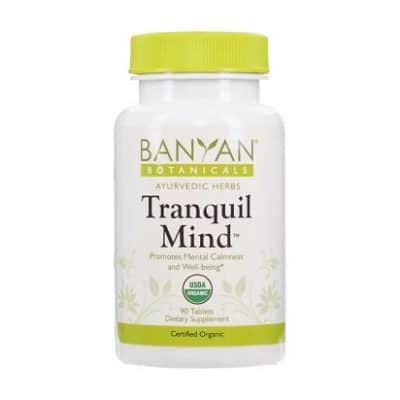
Tranquil Mind 500 mg 90 tabs
$ 34.95 -

Triphala
$ 34.95 -

Turmeric Powder 1 lb (Certified Organic)
$ 29.95 -

Turmeric Tabs
$ 24.95 -
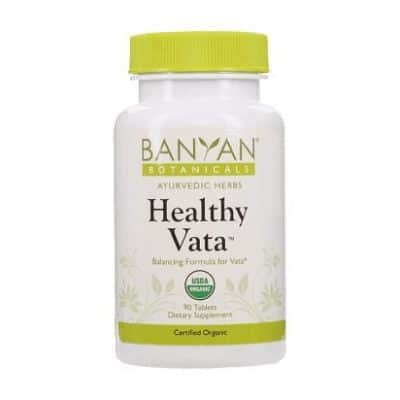
Vata Balancing Formula 500 mg 90 tabs
$ 34.95 -

Vata Digest 500 mg 90 tabs
$ 34.95

Stretching for Pain Relief
Next to breathing and breath work, stretching is the most beneficial exercises we can do for better health. Done in tandem, breath work and stretching are the best support for easing aches, pain, tension, headaches, tight muscles and unexplained pain elsewhere in the body. Just as there are different types of flexibility, there are also different types of stretching.

Yoga Remedies
Find our most comprehensive guide for using yoga to help heal back pain to gastritis, headaches to traumatic events! This A-to-Z guide of poses targets specific problems in your body and gets you feeling better. Using this approach to yoga can help with more than 50 common ailments ranging from arthritis to fibromyalgia and hiatal hernia to sore feet!

Finding A Mentor
A teacher or mentor in life is important! They say the mentor comes when the student is ready. “Mentoring is a brain to pick, an ear to listen, and a push in the right direction.” Some of my greatest mentors have been my parents, dance teachers, yoga teachers and colleagues. In this article you will find my own personal journey from the mentors in my life! ~ From my book, The Crystal Teacher Manual…

Aromatherapy Monthly Club
Love Aromatherapy? Essential oils are the purest form and most medicinal in their action. Incense are made from the oils and resins of plants. Aromatherapy is also incorporated in herbal candles, crystals and gemstones and in massage and body lotions. Each month, you will experience several of our famous aroma products for mind, body, spirit! Want to learn more about this great program?
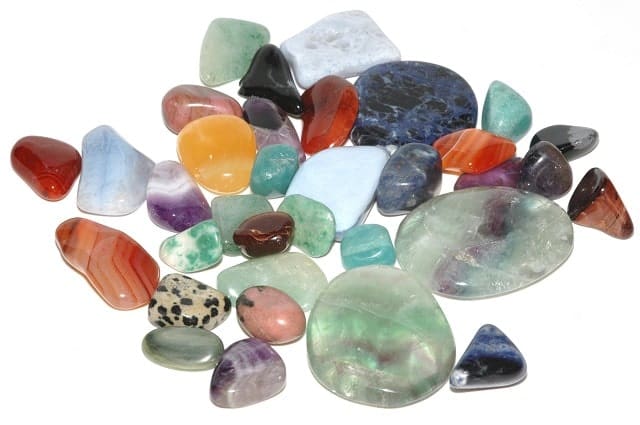
Gem of the Month Club
Love Crystals? Crystal Therapy is about our emotional sense of well being and self discovery. A holistic therapy that promotes harmony in body, mind and spirit. Empower yourself or someone you love with an exclusive membership in our Crystal Gem of the Month Club! Each month’s crystal shipment comes complete with instructions, suggested uses, ideas and even recipes.

Year Round Discounts
Welcome to an additional bonus that you should be aware of. As a savvy Internet surfer, and someone who is looking for the best deals on products you love and purchase often, the Gold or Silver Membership is an extra bonus in savings! We are grateful to offer these wonderful benefits when you become a member! This is the best way to receive health benefits and amazing discounts!




